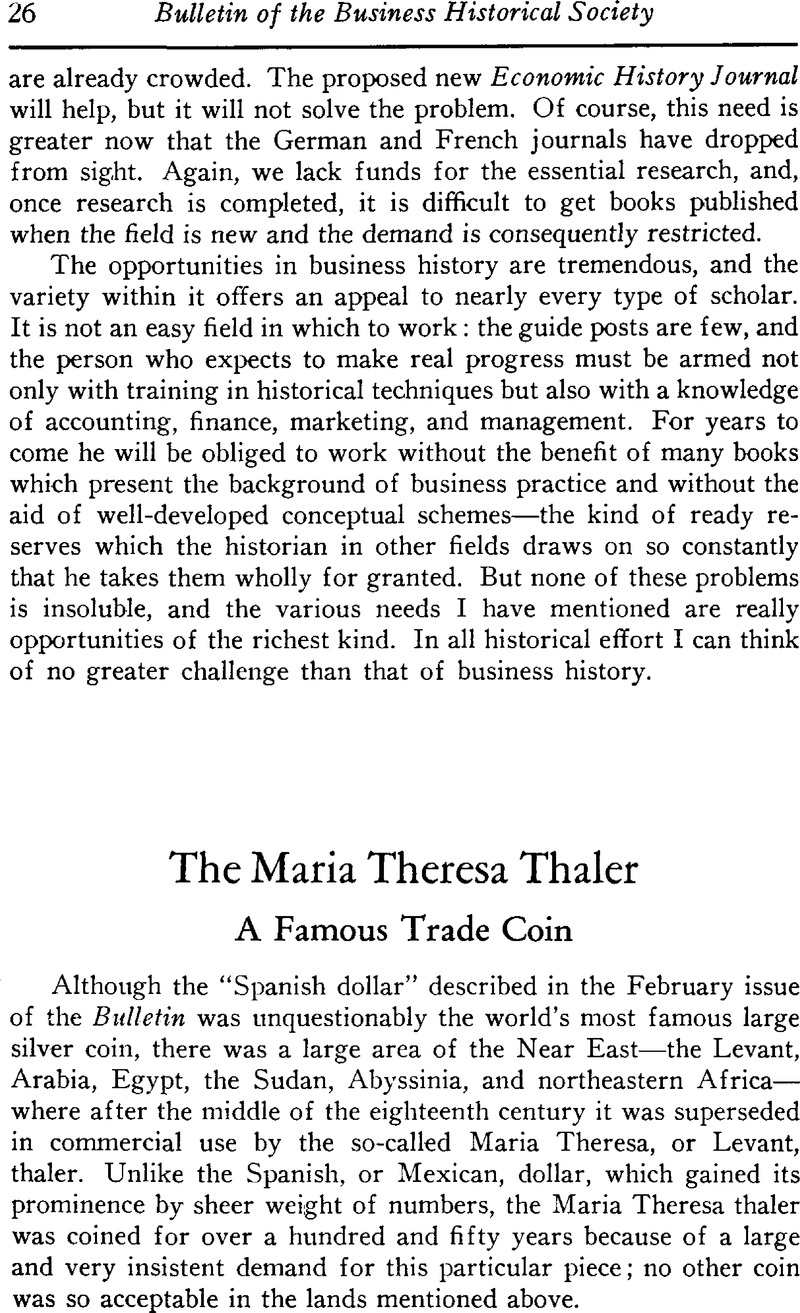No CrossRef data available.
Published online by Cambridge University Press: 24 July 2012

1 In 1719 Charles VI made Trieste a free port and also encouraged foreign merchants to establish themselves in Vienna.
2 Coins have always been much used in the Near East as women's ornaments, jewelry, etc., and the thaler's fine workmanship made it especially attractive for this purpose. Moreover, the buxom portrait of the Empress is said to have carried a strong appeal to the Levantines, who “liked their women plump.”
3 Günzburg, then Austrian, is near the famous old banking and trading city of Augsburg. Bankers of the latter place often brought bullion to Günzburg for coinage.
4 It must be understood that, since dies wear out or break with use, there have been many, many series of dies for the Maria Theresa thaler, but all have been cut after the old Günzburg design.
5 In northwestern Africa it failed to get a foothold by reason of the French occupation of Algeria and the introduction there of the attractive French five-franc piece. Down the east coast of Africa it appeared often, but a clever French naval officer persuaded the Sultan of Zanzibar to depreciate it in favor of the five-franc piece. Farther east the Indian rupee was dominant, and in the Far East the Spanish, or Mexican, dollar defied challenge.
6 In spite of all efforts to popularize the five-lira pieces of King Humbert struck for Eritrea, the thaler remained dominant, for the hinterland would not accept the Italian pieces. Similarly a coinage in the “midnineties” of King Menelik of Abyssinia met with little local favor. The issue by Italy in wartime (in 1918) of a trade dollar, the design of which was obviously inspired by the Maria Theresa thaler, lasted one year only!
7 Unquestionably arbitraging gold and silver prices had at times a powerful influence on the striking of these pieces for export—a study for an economist rather than a numismatist.
8 England found herself in the same situation in 1868 when, to finance Napier's punitive expedition into Abyssinia, she had to secure a large supply of thalers from the Vienna mint.
9 Regardless of coinage in non-Austrian mints, the total “legitimate” Austrian output can be estimated conservatively as around 250,000,000 pieces.